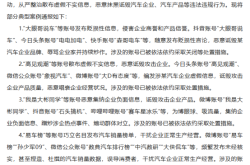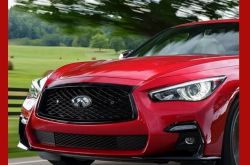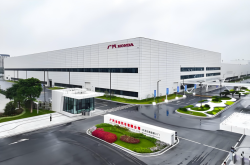Advice for Honda and Nissan in the Face of Chinese Auto Market Challenges
![]() 12/30 2024
12/30 2024
![]() 596
596
How can Honda and Nissan effectively address the challenges of the Chinese automobile market?
text
Recently, numerous analysts have examined the potential merger between Honda and Nissan, concluding that while the integration process may be arduous, the long-term outlook is promising. However, ranking these automakers solely by size may be premature.
The critical factor is not the immediate scale or revenue post-merger but the development prospects for both companies. Objectively speaking, Honda and Nissan, as two distinct automotive entities, might not fully comprehend the "fire" they seek to extinguish by joining forces.
Does the Japanese automotive industry need to reassess its manufacturing approach?
Many analysts argue that Honda and Nissan's struggles in the new energy market have led to significant sales declines, prompting them to seek consolidation. While this perspective holds merit, a deeper dive reveals a more nuanced scenario.
In the rapidly evolving new energy era, Honda and Nissan have been slow to adapt, contrasting sharply with the swift progress of Chinese new energy manufacturers like BYD and Hongmeng Zhixing.
Fundamentally, this disparity stems from differences in industrial chain models. Back in the 1970s and 1980s, Japan's manufacturing industry flourished, producing numerous giants to compete with European and American counterparts. For instance, Toyota and Honda largely relied on in-house subsidiaries for car parts, contributing to their substantial size.
Honda encompasses subsidiaries such as Honda Power Equipment, Honda Power Product, Honda Eletric, and Honda Jet. Similarly, Toyota Motor Corporation boasts wholly-owned and joint-venture entities like Aisin AW, Toyota Boshoku, Denso, Yamaha, and Fuji Heavy Industries, with Yamaha active in diverse industries.
Under this industrial chain model, the success of leading enterprises uplifts their subsidiaries and the entire supply chain. However, Japan's cultural emphasis on hierarchical relationships can stifle innovation. In the 1980s and 1990s, this model thrived due to the simplicity of automotive manufacturing, propelling several automakers to global prominence.
The advent of electrification and intelligent systems changed the game. The automotive industry now heavily relies on electronic components, necessitating advancements in electronic control, software algorithms, and chip technology. Traditional Japanese automakers struggle to develop complex components like lidar, millimeter-wave radars, cameras, battery cells, and chips simultaneously.
Honda and Nissan cling to the outdated notion of controlling the entire supply chain. In contrast, Chinese enterprises have embraced integrated production. Companies like CATL and BYD supply high-quality batteries, while tech firms like Momenta, Huawei, and Horizon Robotics offer intelligent solutions, propelling Chinese automakers to the forefront of the new energy era.
This contrast explains why Honda and Nissan seek consolidation. Their meticulous approach, whether through outsourcing or vertical integration, leaves them vulnerable if any link falters.
Is the Honda-Nissan merger merely a bubble of progress?
The merger stems from both automakers' market struggles, particularly in the sluggish new energy sector. According to the Financial Times, Nissan faced a bankruptcy crisis in Q4 2024, with executives hinting at a search for new investors and a survival window of 12-14 months.
Moody's and Fitch Ratings downgraded Nissan's outlook, signaling financial distress. On December 23, Honda and Nissan announced their merger, with details to be finalized within six months. Mitsubishi Motors' participation will be decided in early 2025.
Post-announcement, both companies' share prices rose. However, the merger alone won't solve all problems; it primarily aims to reduce operational costs. In 2024's first ten months, Nissan sold 2.77 million vehicles globally (flat year-on-year) but saw a 10% sales decline in China. Honda produced 3.13 million vehicles, down 9% globally and 34.5% in China.
Despite significant production and sales, both brands face severe margin compression in China's price war. To maintain market share, they must lower prices, eroding profits. Merging will streamline technology and production capacity, centralize procurement, and reduce costs, but it doesn't address the root issue: slow new energy development.
In the electric era, Honda boasts the i-MMD technology, while its Chinese EV brands Ye P and Lingxi have made little impact. Nissan fares worse, lacking notable EV products, and its e-POWER hybrid technology is deemed inferior to Chinese extended-range solutions.
Therefore, Honda and Nissan must abandon the full industrial chain model and delegate authority in intelligent and electric development. Instead of relying on the U.S. and Japan, they should tap into China's new energy hub.
Is China the hope for Honda and Nissan?
Japanese companies have studied Chinese EVs from BYD and Geely, publishing insightful books. Half a century ago, Japan's auto industry learned from the U.S. and Europe, achieving remarkable success. Today, the merged Honda-Nissan can focus on China, offering significant opportunities:
First, both have joint ventures with Dongfeng Motor in China. While these ventures face challenges, Dongfeng's independent brands like Yipal and Lunar thrive in the intelligent electric era.
Honda and Nissan should enhance cooperation with Dongfeng, leveraging its battery technology, intelligence, and supply chain management to empower their operations. Dongfeng's experience can guide them in making family cars or high-end EVs.
Second, China's intelligent new energy market is open, with numerous supply chain and technology providers willing to assist automakers. Honda and Nissan lack intelligence in the new era, an area where Chinese tech firms excel. Collaboration with companies like Huawei, Momenta, Baidu Apollo, and Horizon Robotics can significantly boost their capabilities.
Such partnerships benefit all involved. Chinese tech firms aim for global dominance, displacing traditional suppliers like Delphi, Bosch, and Continental. This goal requires support from both Chinese and international automakers like Honda and Nissan.
Deeper cooperation with Chinese tech firms will accelerate Honda, Nissan, and even Toyota's progress in smart electric vehicles. With Europe's EV penetration at 20% and the U.S. at 10%, significant growth potential exists. Enhanced product competitiveness and brand acceptance in these markets promise substantial development.
Therefore, the author believes the benefits of the Honda-Nissan merger pale in comparison to tapping China's potential. By focusing on China, these automakers can achieve greater success than through mere consolidation.
Conclusion:
Unlike the Zeekr-Lynk & Co. merger, which sought operational efficiency, the Honda-Nissan union appears more like a desperate measure. As former Nissan CEO Carlos Ghosn noted, the companies lack product complementarity. Facing new energy pressures, they must set aside prejudices, use Dongfeng as a bridge, and seek technological and product breakthroughs in the Chinese market.






